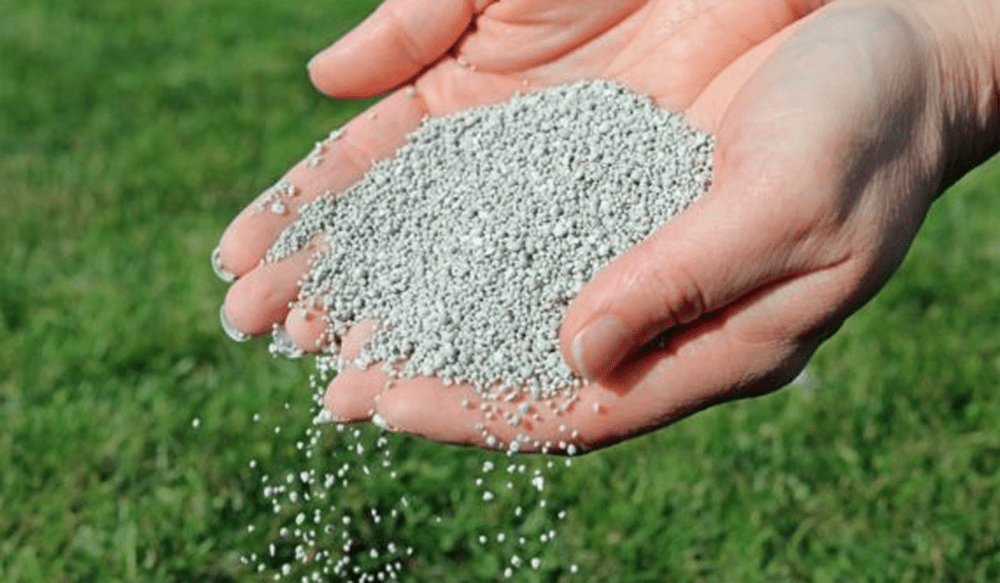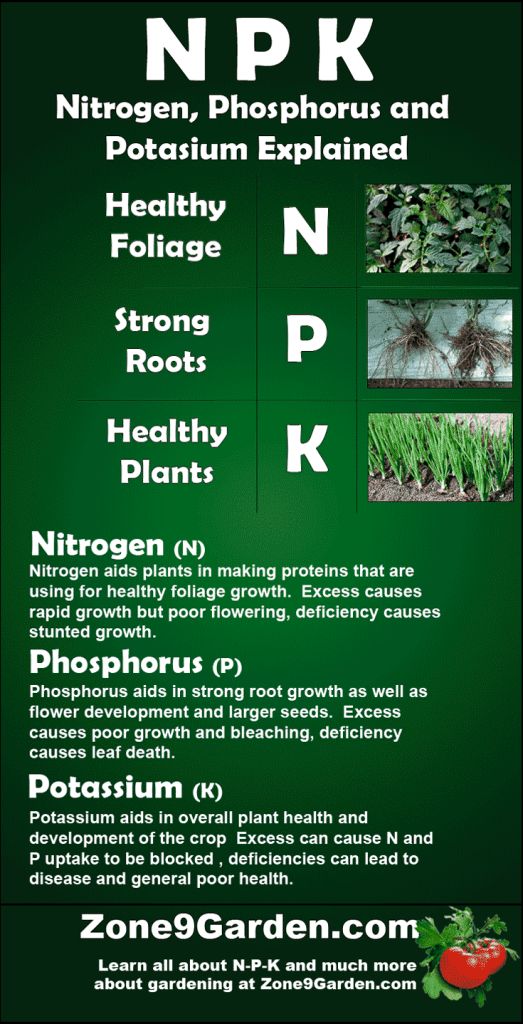Fertilizers, both organic and chemical based, are rated by their content of the Macro-Nutrients NPK ( N-Nitrogen P-Phosphorus K-Potassium). These nutrients are the most vital of all the nutrients that plants use to grow and produce fruit. This article will explain how each nutrient is used by plants, what happens when it is used in excess, what happens when there is a deficiency. and explain NPK ratios.
Nitrogen (N)
Nitrogen's primary role is to aid the plant in making proteins used as the building blocks for leaves and stems. In nature nitrogen is not often readily available and it moves rapidly through out the soil and is lost to convection and other mechanisms.
An over abundance of nitrogen will cause a plant to grow quickly, however, this rapid growth will not only affect its health, but will cause the plant to produce very few if any flowers that lead to fruit production.
Excess nitrogen can actually stunt the growth of plants and even kill young plants. When N is available in excessive amounts the plants will take in so much of it that all other nutrients are ignored causing a massive imbalance and stunting the growth of established plants and possibly killing young plants.
Symptoms of a nitrogen deficiency include:
- Short plants
- Small leaves
- Yellowing
Deficiency symptoms are noticeable on older growth first. When a plant is lacking nitrogen it will start to break down the nitrogen in older parts to provide it for new growth.
Phosphorus (P)
Phosphorus is used by plants to aide in root and flower growth. The phosphorus allows the plant to transfer energy to areas such as roots and flowers and also improves the vitality of the plant. Seed size is also affected by P .
Phosphorus does not move through the soil the way that nitrogen does and it effectively fixes its self to soil. Because it is not lost easily, over doses of Phosphorus are common. Excessive P can stop uptake of Zinc and Iron and affects symbiotic bacteria/fungus that aides many plants root systems in water and nutrient uptake.
Symptoms of excessive phosphorus include:
- Excessive weed growth
- Stunted Plant Growth
- Bleaching leaves with green veins
When soil has a moderate Phosphorus deficiency it can be quite difficult to diagnose. Plants will often times be smaller than expected and have darker leaves with a slight blue tint. When the deficiency is more acute it can be quite easy to diagnose.
Symptoms of phosphorus deficiency:
- Older leaves turning "fall" colors before expected
- Yellowing of older leaves
- Leaves falling off plants
Potassium (K)
Potassium is the main nutrient that aids in overall health and development of the plant. K stimulates early growth, increases protein production, improves water use efficiency and improves resistance to diseases and insects.
Excess Potassium does not have any direct effects on plants but does cause N and P uptake to be blocked causing deficiencies.
Deficiency of K can lead to poor general health of the plant as well as increased susceptibility to insects and diseases. Symptoms include:
- Brown scorching and curling of leaf tips
- Leaf chlorosis (yellowing) between leaf veins
- Purple spots on the bottom of leafs
- Stunted growth
Potassium is mobile through out the plant and plants will often move potassium from the lower parts of the plant to the higher parts. Because of K's mobility most symptoms will become evident on the lower areas of a plant first.
NPK Ratios
When looking at fertilizer there are always 3 numbers on the container that represent the percentage of Nitrogen, Phosphorus and Potassium (N-P-K). A fertilizer with an NPK rating of 10-10-10 is an equally balanced fertilizer with an even 10% of each nutrient. The remaining 70% of the product is micro-nutrients (also vital) and fillers (added to help prevent burning plants with an overdose of fertilizers).
Most plants do best with a balanced ratio of macro nutrients, however, some plants have very specific needs. Crops like beans and peas naturally affix nitrogen to the soil so fertilizers with low nitrogen count are best, while leafy greens have higher nitrogen requirements as the main crop is the leaf growth (which is encouraged by nitrogen).
Some crops, such as Tomatoes, have different requirements throughout their life span. The first fertilization should make an even ratio of nutrients available to the plant but by the time the plant is ready to start producing fruit nitrogen should be low on the ratio and phosphorus should be higher. This will help encourage the plant to direct most of its energy to developing fruit and not leaf/stem growth.
That ratio and amount of fertilizer required is determined by the crop being grown and the amount of nutrients found in a test of the soil. Each type of plant has its own nutrient requirements and the amount of fertilizer needed and the ratio that it is needed can only be determined by a test.




